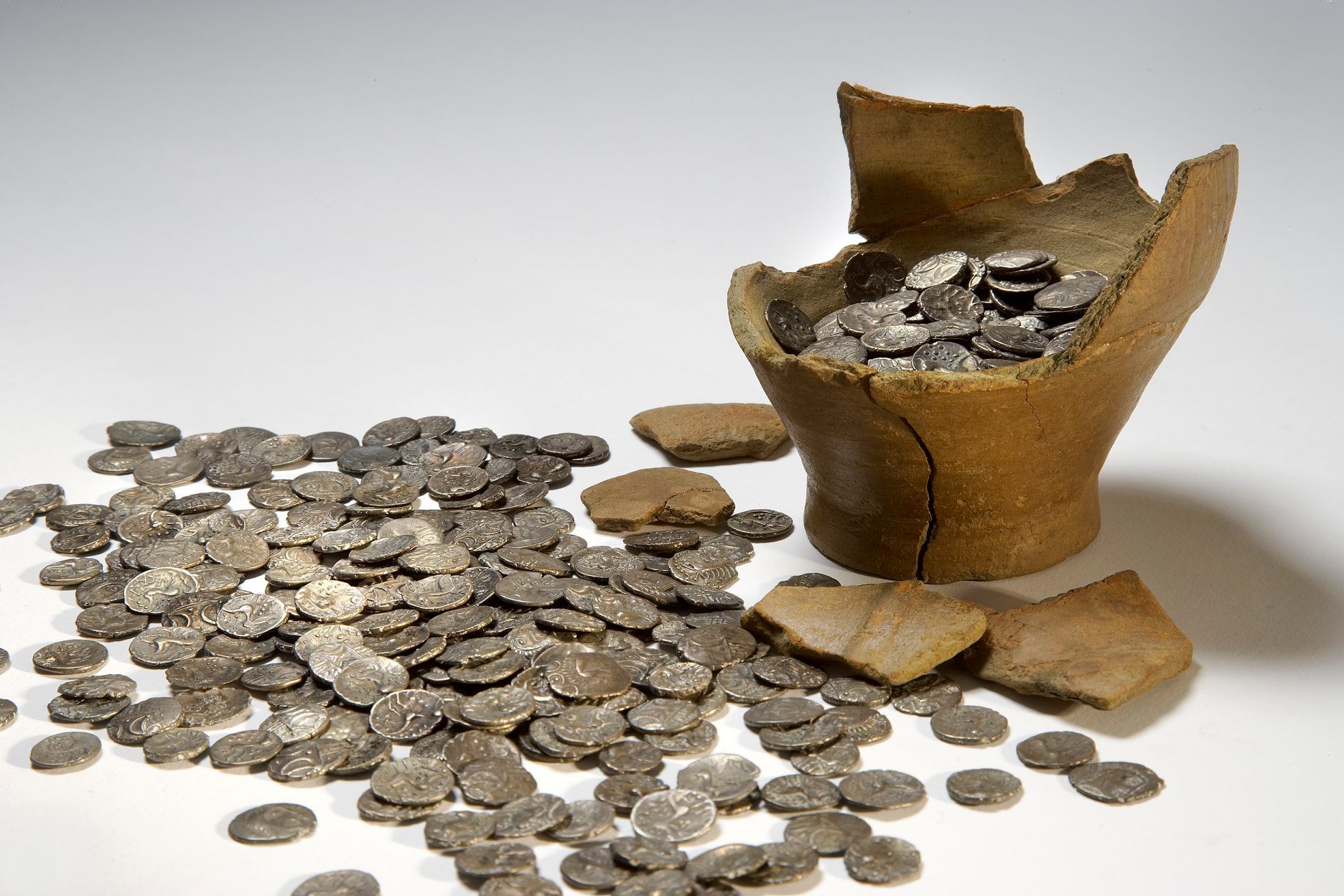The Forncett Hoard
The Honingham Hoard of Iceni coins - courtesy of Norwich Castle Museum
The Forncett Hoard
In the 1st century AD, prior to the Roman invasion, Norfolk was inhabited by a British Celtic tribe called the Iceni. Their king, Prasutagus, is best known as the husband of Boudica. Following the conquest of Britain by the Roman emperor Claudius in AD 43 the Iceni allied with Rome and were consequently allowed to retain their own laws and a degree of independence. Nevertheless there was a significant Roman presence in Norfolk and at least 15 Roman archaeological sites have been documented in Forncett.
In AD 60 King Prasutagus died. The Roman historian Tacitus recorded that the Romans then confiscated the estates of the leading Iceni men and abused both Boudica and her two daughters. The Iceni then rose up in revolt and Boudica led a rebel army against Camulodunum (modern day Colchester). Following a subsequent assault on Verulamium (St. Albans), Boudica's troops were eventually defeated by the Roman centurions and Boudica is said to have taken her life with poison.

Statue of Queen Boudica near Westminster Pier
The rebellion is believed to have led to a major increase in Roman military activity in Norfolk, and this has been linked to the many hoards of coins dating from the Boudican period that have been discovered in south east Norfolk and north Suffolk. One such hoard, found in Honingham in 1954, is shown in the header photograph.
Here in Forncett, it's possible that around this time, a Roman soldier buried a pot containing nearly 400 coins in a field close to the River Tas. In August 1996, fourteen coins, 10 silver Iceni coins and 4 Roman denarii coined under Tiberius, were found by five metal detectorists working in the Tas valley. The following year, on 26th July 1997, an amateur detectorist, 41 year-old Paul Thrower from Long Stratton, unearthed two more silver coins in a field owned by David Barnes at Street Farm. Paul was convinced that, as the two coins were stuck together, they probably indicated that there was a much larger hoard nearby. He returned the following day and found the rest of the hoard scattered in a circle 12 inches below the surface, together with the remains of a Roman pot.
Examples of coins from the Forncett Hoard
In total the hoard contained 336 silver Iceni coins, of six different patterns, thought to have been cast between AD 5 and AD 50. These Iceni silver coins typically had a variety of designs on the obverse but invariably showed a horse on the reverse. They are quite small, around 1cm in diameter and weighing about 1 gram. The hoard also contained 45 silver Roman denarii. Of these, twenty-three dated from the period 128-42 BC and nine coins were dated 32-31 BC. Seven were coined under the emperor Augustus between 27 BC and AD 14, and six were coined under the emperor Tiberius between AD 14 and AD 37.
The coins were taken by Paul Thrower and David Barnes to the Castle Museum in Norwich and in October 1997, at an inquest held in Diss, the jury returned a unanimous verdict that the hoard should be declared treasure trove.
Some of the coins from the Forncett Hoard are now held by the British Museum, Wymondham Heritage Society, and Diss Museum. Others are now in private ownership. Paul Thrower was a close friend of History Group member, Alan Womack, and Paul kindly gave one of the Iceni coins to the Group where it was adopted as the History Group logo.

